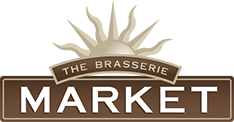Did you know that 85 per cent of the food offered at The Brasserie is sourced locally? The majority of this local produce comes from the restaurant garden, chicken coop, bee hives, our Brasserie Catch fishing boats and Coco Bluff coconut plantation.
There is a lot that goes on behind the scenes at Cricket Square, and around the island, to sustainably bring you the freshest and tastiest food that our talented chefs create into delicious menu items at The Brasserie, Market, Caboose and Juiced.
In the latest edition of InsideOut magazine you can read all about ‘The Brasserie’s mission of self-sufficiency.’
For example, did you know that our Coco Bluff Farm gardener, Andy McKenzie, tends to more than 200 palms? His important job helps to supply coconut water and jelly to the Market and Juiced, and coconut meat that is shredded as a salad topping and made into flour for the Brasserie Bakehouse to create home-baked goods.



The leftover husk is used as organic mulch for the garden, where qualified biologist and Head Gardner, Aide Lopez, has adopted a no-dig method to minimise disturbing the organic garden beds. The coconut fibre boosts plant and soil health, and increases water retention as we head into a warm Caribbean summer. On top of that, coconut mulch looks and smells great, reduces all waste from the coconut farm, and saves costs. Finally, the coconut shells, normally considered waste, become excellent fire fodder for the Caboose.
The Brasserie team also take care of over 100 chickens that provide eggs to the restaurant. The eggshells are used to compost the plants or make Aide’s plant-loving chemical-free fertiliser specific to fruit trees. Adding leftover banana, potato and eggshell can give the trees a much-needed potassium boost. “Potassium helps plants to move water and sugar, so it makes fruit juicier and sweeter and it also improves the quality of flowers. Secondly, potassium helps strengthen plants – it thickens their cell walls. The banana peels also release small amounts of nitrogen, phosphorus and magnesium,” says Aide.
“We boil all the ingredients together to release all the essential nutrients from the produce including calcium from the egg shells, and then sieve the mixture. The pulp goes into our compost and the precious liquid is diluted with water before being used as fertiliser. One gallon of the concentrate makes four gallons of spray. Sixteen gallons of fertiliser is enough to cover 25 trees. When the trees start to bloom, we spray to help the development of fruit. This is important as we head into rainy season as the rain can wash the pollen off the flowers.”
What happens to the laying hens once they retire? What products are made from The Brasserie Bees honey and wax? What names have been given to the coconut varieties on the farm?
Find out the answers to these questions as well as more ways The Brasserie is reducing, reusing and recycling in the Spring-Summer 2024 edition of InsideOut magazine.

